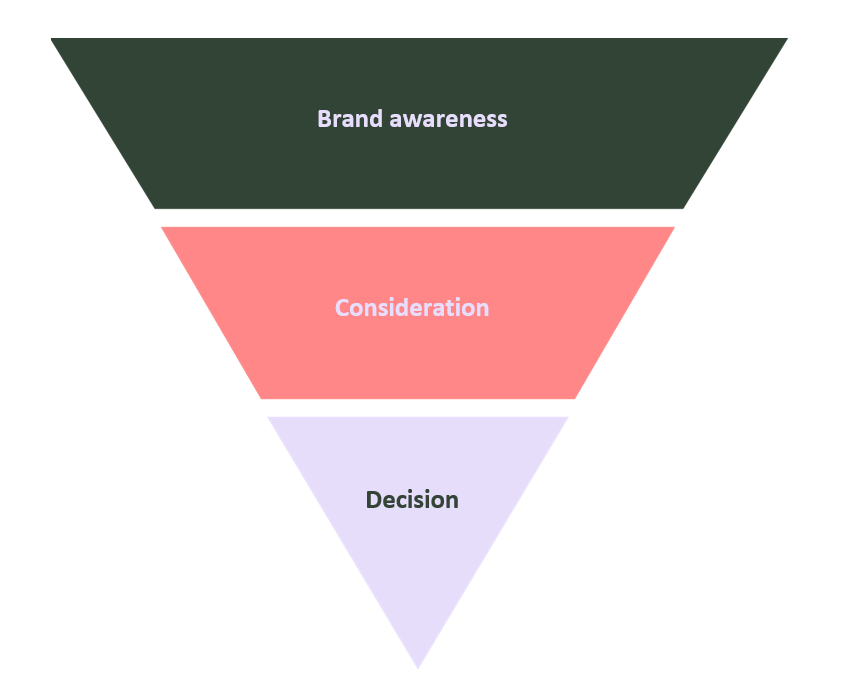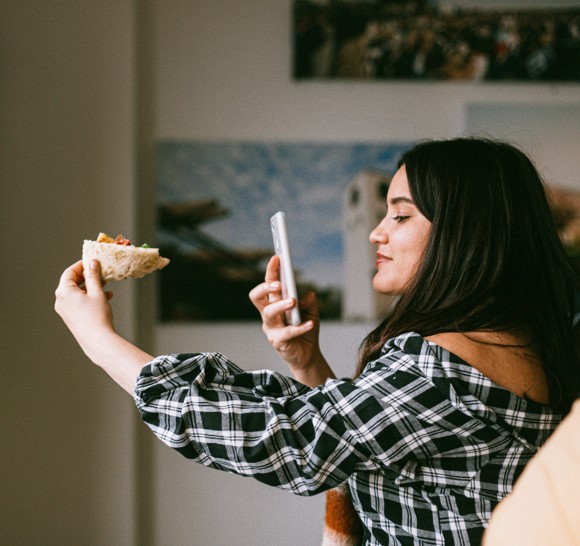Influencer marketing is an increasingly important part of your (future) marketing strategy. 20,3% of Flemish youngsters have bought something in the last three months because they were inspired by an influencer. No time to waste to embrace influencer marketing.
Still a bit reluctant or don’t know how to start with influencer marketing? Here is everything you need to know.
Influenc-euh?
What is an influencer exactly? An influencer is an individual with personal authority, posture, expertise, or relationships that impact the buying & behavioral decisions of others. The main key to an influencer is that they have built a relationship with their audience either through expertise or experience.
Influencer marketing itself involves a brand collaborating with an online influencer to market one of its products or services. Some influencer marketing collaborations are less tangible, brands simply work with influencers to improve brand recognition. Influencer marketing is about more than just selling and pushing your product to potential buyers.
”“Influencer Marketing helps brands become more human by connecting them with consumers through authentic storytelling.”

Incredible impact of influencers
Influencers are here to stay, it’s not a hype. They are seen as a credible source of information. Nearly 2 out of every 3 consumers say that they trust influencer messages about a brand more than a company’s advertising about their own brand. Therefore they have an incredible impact. Not only on sales – 20,3% of Flemish youngsters have bought something in the last three months because they were inspired by an influencer – but it goes hand in hand with several benefits for your marketing efforts.
#1 First of all influencers create content themselves, which is seen as more authentic. It therefore corresponds more with the needs of consumers, namely brand relationships that feel less robotic and more real.
#2 Moreover influencer marketing has a positive impact on your brand perception, being perceived as more fashionable and young. 1/5 of Flemish youths follow brands thanks to influencers.
#3 As people actually decide themselves to follow certain influencers, influencer marketing is also seen as more organic and less disruptive. People are tired of display ads. Because influencer marketing is placed within organic content by someone they admire and often a more inspiring approach, creating a more pleasurable experience for consumers and a more powerful marketing solution for brands.
#4 Influencers don’t just only inspire their followers, but they actually increase peoples’ buying consideration. Thanks to influencers 33% of people discover a product and even half of them buy one.
#5 Working with influencer marketing reduces overall marketing costs. Influencer marketing provides you with new content which you can share on your own channels and reuse as other marketing assets.
#6 Influencer marketing has an extremely high ROI. Because production costs are for the influencer, it is cheaper. Moreover, the influencers know their audience inside out. Each euro invested in Influencer Marketing has an average ROI of €6,5.


How to incorporate influencer marketing in your marketing mix
Feeling the need and added value of influencer marketing? Don’t worry, we got your back. Here is a step-by-step overview on how to incorporate influencer marketing in your marketing mix.
Set your goals
First of all it is important to determine your goals. During this, it is important to always keep in mind what the briefing is, what product or service you are selling and what story you are telling. You need to determine whether you want to achieve awareness, traffic or conversion? Accordingly you need to establish some – quantitative or qualitative – KPI’s to measure the success of your campaign.
Awareness, the traditional and main objective of influencer marketing, can be measured by tracking for example reach, effective impressions, growth in followers on brand account. In the consideration stage are KPI’s like engagement (likes, comments, shares, saves) and sentiment most important. Conversions and sales in the decision stage are however rising and growing in importance as a goal for influencer marketing and can be measured via number of swipe ups, usage of promotion codes, number of clicks on link in bio.

Research and find your target audience
Next it is important to define your target audience and map their needs and interests. Who do you want to reach? What is their age, gender, interests, location? On what social channels are they active? What content do they like? An IT specialist doesn’t consume the same type of media and definitely doesn’t have the same interests as a fifteen year old who loves fashion.
Analyse marketing landscape and define timing
Don’t forget to also take into account the broader influencer- and marketing landscape all around you. Keep in mind what your competitors are doing and what the market is like. In order to have impact, you need to stand out. Your timing is also important, for example focusing on top topicals or press timings. When do you need content online?
The three R’s of influence to determine the right content creators
To successfully implement influencer marketing in your marketing strategy and to optimally profit from their benefits, it is important to not randomly select influencers but to create a tailor-made and unique influencer campaign with the right fit for both the brand and the message. (Remember the Kendall Jenner Pepsi drama?) You need to consider the influencers’ audience, engagement, match with brand DNA, tone-of-voice, budget etc. Always think about the three ‘R’s: relevance, reach and resonance.
Relevance means the influencer is sharing content and developing a following relevant to your business and the particular market segment you want to target. If you’re an exclusive brand selling high-end products, targeting the upper (middle) class, you don’t want to establish a partnership with an influencer with an audience that consists for 75% of generation Z, nor the other way around.
Reach is the number of people you could potentially reach through the influencer’s follower base that would bring value to your business.
Last but not least resonance is important. This is the potential level of engagement the influencer can create with an audience that’s valuable and relevant to your brand.
In order to have a successful influencer marketing strategy, it is important to have an intelligent mix of different types of influencers. It’s wrong to believe that there is just one group of influencers that rules the game: different actions, channels, and influencers can be combined for a single brand. You can drive visibility for your brand with macro-influencers and at the same time drive concrete actions with micro- and nano-influencers.
Create engaging content together with content creators

In the process of creating content, it is important to set boundaries, like a clear briefing and contract, usage rights, exclusivity, timings & deadlines, key messages and story you want them to tell, hashtags & tags. Make sure to follow the influencer guidelines and be transparent to your consumers.
On the other hand, it is equally important to let your influencers be creative. Make sure it actually is content co-creation: listen to creative proposals from your influencers and be flexible to let them to do their thing, they know their audience best. Don’t lose sight of authenticity and long term relationships. Don’t only call them when you need them. By maintaining a respectful and sincere relation with them, both sides will benefit. This will make sure that influencers want to work with your brand. They are an important value driver… and you need them.
Measure and optimize results
Measure the outcomes by comparing your KPI’s with the final results. For LolaLiza, we set up a LolaLiza Live to launch their new collection in times of social distancing, resulting in an ROI multiplied by 8. Although an increase in sales has to be the holy grail of influencer marketing, you do need to recognize that there may be a time lag between starting your influencer marketing campaign and new people buying your products. Social media usually helps build relationships, rather than instantly leading to sales.
Ready to rumble?
Are you ready to incorporate influencer marketing in your marketing strategy? Here are five hands-on tips and tricks to keep in mind.
- Define and communicate clear KPI’s. To do so, a clear briefing and contract is key. Both for you, by asking the right questions to your client (who is it for, what is your goal …) as for the influencers themselves (key messages, hashtags, tags, deadlines …).
- Artistic and creative freedom is extremely important. The influencers know their modus vivendi and audience inside out. Freedom for influencers works best for the brands credibility.
- Obey the ACC influencer guidelines and be transparent about your collabs, it will save you trouble afterwards.
- Track the results and optimize along the way. For example by creating a unique (owned) hashtag, using trackable links or providing promo codes you can easily monitor the campaign.
Feeling inspired? Need help with your influencer marketing strategy?
The MMBSY-team is always happy to help and ready to share their expertise for your brand. Get in touch.
Sources:
- In-house experience and expertise from Myra Nurski, Eline Vervloet and Helena Vanleeuw
- UBA– “Influencers marketing bevestigt status bij jongeren”
- Source Trust Barometer
- Davidson – “What consumers want from brands in 2020”
- Hello Social – “9 Reasons to Invest in Influencer Marketing”
- Forbes – “Five Reasons To Invest In Influencer Marketing Today”
- The State of Influencer Marketing 2020: Benchmark Report
- Influo – “How to recognize the right influencer for your brand”
- SMI barometer
- Business 2 community – Influencer Marketing Statistics That Prove Why It’s So Popular
- Carole Lamarque – “Influencers”
Read our story
MMBSY is a full-service PR & Content Marketing Agency. Buzzing with lifestyle brands, powerful connections, creative craftsmanship and fiery business brainery.
